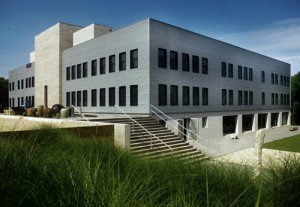The Watermill Center
A laboratory for performance
The Watermill Center was founded in 1992 by theater and visual artist Robert Wilson on the site of a former Western Union communication research facility near Southampton, Long Island, about two hours from New York City. Watermill fosters research into the arts of the stage, to provide young and emerging artists with a unique environment for creation and exploration in theater and all its related art forms, and to develop a strong global network transcending age, experience, social, religious and cultural backgrounds.
Watermill supports projects that mix and integrate different genres and art forms, break with traditional forms of representation, and develop democratic and cross-cultural approaches. Watermill is about living and working together, about creating your own environment and sharing this experience with others.

The Watermill Center
Watermill houses Robert Wilson’s extensive art collection for research, study and inspiration. The whole of human experience and traditions in all their diversity is the springboard for the avant-garde of the future. Books, photographs, films, and other documents from the Robert Wilson Archive offer a chance to explore the life and work of Robert Wilson and his collaborators.
Watermill offers a wide range of programs and activities throughout the year. For the well-known International Summer Program, Robert Wilson invites about 80 artists, young as well as established, for workshops developing his work. From September to June, Watermill provides space and time for 12 to 15 artists’ residencies selected by a high-profile committee of practitioners in the arts and humanities. The residencies are complemented by educational programs with schools and other institutions, public events such as open rehearsals and lectures, tours of the building and grounds, and seminars and symposia.
The new building, situated in 6 acres of spectacular landscaped grounds, offers over 20,000 sqf (2,200 square meters) of multifunctional spaces for rehearsals, staging practices, workshops, studios and exhibitions. Bedrooms and a dormitory in the main building and a near-by house can accommodate groups of up to 15 participants.
(Courtesy of the Watermill Center)